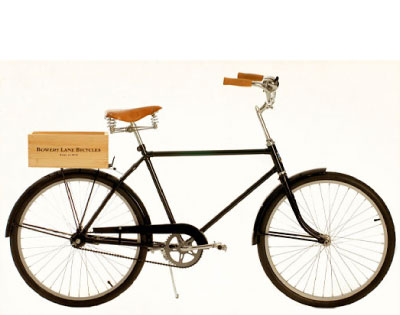

Ah, nothing to fill you with that enticing feeling of freedom like cruising your bike down the block on a grand summer’s day. The wind in your hair, sun in your face, and your fellow commuters’ envious gaze on your exquisite new ride. Because really, what other way to ride a bike than with impeccable style? The people behind Bowery Lane Bicycles, a New York-based family company, have the right idea — and they’re performing it with great finesse.
The retro-style Bowery Lane bikes are handmade in New York out of American steel. The two-wheelers are available in three styles, all of which are locally handcrafted and manufactured and made with eco-friendly parts such as sustainable cork grips. The Broncks Black — the company’s flagship, inspired by a Dutch original — is even made with renewable solar energy, bringing together traditional craftsmanship and sustainable technology. The company was founded with the goal to make affordable bikes that have more to offer than flair and timeless beauty (as if that wouldn’t be enough) and they sure deliver what they set out to do.
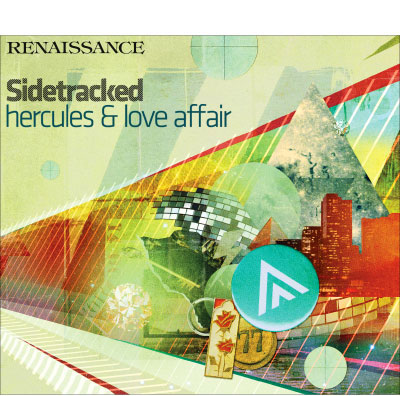
Renaissance Recordings

Brace yourselves, Hercules fans. While this valuable back catalogue of DFA DJ Andy Butler’s favorite disco and house cuts smacks of “Raise Me Up” (one of many highlights from Hercules’ self-titled 2008 debut), there’s only one Love Affair exclusive to be found on this double-disc set. “I Can’t Wait”, a sparse house track featuring the laconic femme vocals of neither Kim Ann nor Nomi (or for that matter, Antony), drags on through vibrating backing arrangements of dirty synths as the chorus repeats, “I won’t bear this cross, I won’t wear these chains.” The remaining tracks recount Butler’s love of Euro-dance, The Clash, and Italo-disco, a collision of styles that gets the party started. Take the boldfaced In Flagranti’s “I Never Screwed Around Before”, in which Butler decoupages Joe Strummer over a La Bouche-esque beat; punk meets house only to get sideswiped in drama. But while Butler wears his influences close to his chest (there’s no Aoki-ing around with these samples), Sidetracked remains a well-executed exercise in curation. Consider it Butler’s immaculate collection, closing with the lushest, pearliest confection of house disco yet: Rainbow Team’s “Dreaming”, which soars to heights even Antony can’t reach.
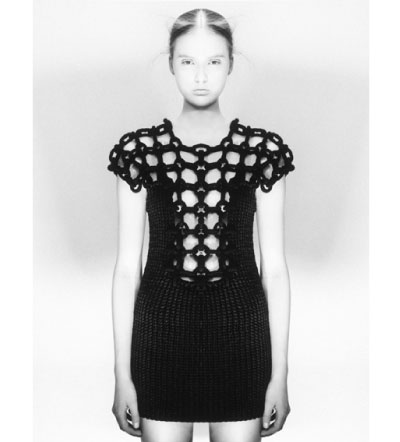
Photography by Peter Gehrke

For Stockholm-based designer Sandra Backlund, the opportunity to work with Italian luxury knitwear producer Maglificio Miles signified as much of an end as it did a beginning. Until now, Backlund has been doing everything herself, producing mind-bogglingly meticulous sculptural fantasies entirely by hand and on a made-to-order basis. In 2007, her distinctive “three-dimensional collage” knitting style made her the grand prix winner of Festival International de Mode et De Photographie in Hyeres, France. Her support network at the White Club, a non-profit organization in Milan that connects talented young designers with established fashion industry professionals, offered Backlund’s portfolio to Miles, who wisely approached her for a collaborative “production test”.
The fruits of their labor, the Control-C Collection for F/W 09-10, offers a decidedly more severe vision than Backlund’s past collections, which tended toward charmingly oddball. Composed of five machine-knit and four handmade pieces, the collection proves that Backlund’s bizarre, gravity-defying aesthetic is realizable via machine — and, therefore, mass produceable. The handmade aspect, however, will always be an integral part of Backlund’s design process.
(more…)
<div class="aligncenter"><div class="imageframe centered" style="width:830px;"><a href="http://www.planet-mag.com/blog/wp-content/uploads/bartekpogoda_page1.jpg" rel="lightbox[pics4099]" title="Girls from the Outside – Zanzibar, 2008."><img border="0" src="http://www.planet-mag.com/blog/wp-content/uploads/bartekpogoda_page1.jpg" alt="bartekpogoda_page1" width="830" height="405" class="attachment wp-att-4103" /></a><div class="imagecaption"><em>Girls from the Other Side</em> – Zanzibar, 2008</div></div></div>
<!–more–>
<div class="imageframe alignright" style="width:830px;"><a href="http://www.planet-mag.com/blog/wp-content/uploads/pagoda_page2.jpg" rel="lightbox[pics4099]" title="Ethiopia, 2008."><img border="0"src="http://www.planet-mag.com/blog/wp-content/uploads/pagoda_page2.jpg" alt="pagoda_page2" width="830" height="405" class="attachment wp-att-4106" /></a><div class="imagecaption">Ethiopia, 2008.</div></div>
<!–more–>
<div class="aligncenter"><div class="imageframe centered" style="width:830px;"><a href="http://www.planet-mag.com/blog/wp-content/uploads/bartokpogoda_page5.jpg" rel="lightbox[pics4099]" title="Catholic Church – Kanyakumari, South India 2005. "><img border="0" src="http://www.planet-mag.com/blog/wp-content/uploads/bartokpogoda_page5.jpg" alt="bartokpogoda_page5" width="830" height="405" class="attachment wp-att-4115" /></a><div class="imagecaption"><em>Catholic Church</em> – Kanyakumari, South India 2005. </div></div></div>
<!–more–>
<div class="aligncenter"><div class="imageframe centered" style="width:830px;"><a href="http://www.planet-mag.com/blog/wp-content/uploads/bartokpagoda_page6.jpg" rel="lightbox[pics4099]" title="City Trash Dump – Phnom Penh, Cambodia 2004. "><img border="0" src="http://www.planet-mag.com/blog/wp-content/uploads/bartokpagoda_page6.jpg" alt="bartokpagoda_page6" width="830" height="405" class="attachment wp-att-4119" /></a><div class="imagecaption"><em>City Trash Dump</em> – Phnom Penh, Cambodia 2004. </div></div></div>
<!–more–>
<div class="aligncenter"><div class="imageframe centered" style="width:830px;"><a href="http://www.planet-mag.com/blog/wp-content/uploads/bartokpagoda_mongolia.jpg" rel="lightbox[pics4099]" title="In the Steppe – Mongolia, 2004."><img border="0" src="http://www.planet-mag.com/blog/wp-content/uploads/bartokpagoda_mongolia.jpg" alt="bartokpagoda_mongolia" width="830" height="405" class="attachment wp-att-4122" /></a><div class="imagecaption"><em>In the Steppe</em> – Mongolia, 2004.</div></div></div>
<!–more–>
<div class="aligncenter"><div class="imageframe centered" style="width:830px;"><a href="http://www.planet-mag.com/blog/wp-content/uploads/bartekpagoda_page3.jpg" rel="lightbox[pics4099]" title="Left: Blue Lagoon, Iceland. 2008. Right: Utila, Honduras. 2006"><img border="0" src="http://www.planet-mag.com/blog/wp-content/uploads/bartekpagoda_page3.jpg" alt="bartekpagoda_page3" width="830" height="405" class="attachment wp-att-4127" /></a><div class="imagecaption"><strong>Left</strong>:Utila, Honduras. 2006 <strong>Right</strong>: <em>Blue Lagoon</em>, Iceland. 2008. <strong></div></div></div>
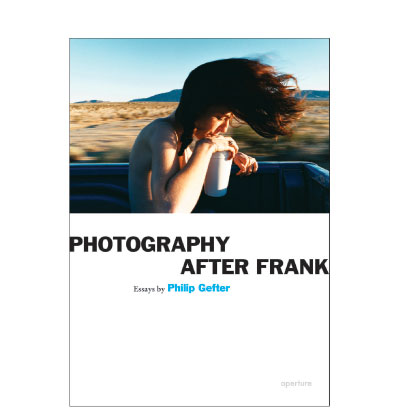

Throughout history there are distinct turning points, an indelible before and after, like the discovery of electricity or onset of the Internet age. Back in 1959, one of those moments occurred when Robert Frank’s seminal tome, The Americans, forever changed the landscape of modern photography. As mentioned in a previous PLANET post, that same collection of photos is currently criss-crossing the country in celebration of its 50th anniversary, so it’s only fitting that a discussion about Frank’s relevancy continues. Philip Gefter’s new book Photography After Frank does just that. In over three dozen essays, the New York Times writer and former picture editor offers his readers brief meditations on contemporary photography, using Frank’s gritty, highly subjective documentary style as his starting point.
In accessible prose, Gefter’s short essays manage to trace Frank’s influence from the likes of Lee Friedlander and Nan Goldin to Stephen Shore and Ryan McGinley. All along the way, he offers readers brief snippets — many of the pieces have been taken from the Times or Aperture magazine, so they’re no more than four pages — on individual photographers and subjects like photo-realism or the market’s effect on art-making.
(more…)
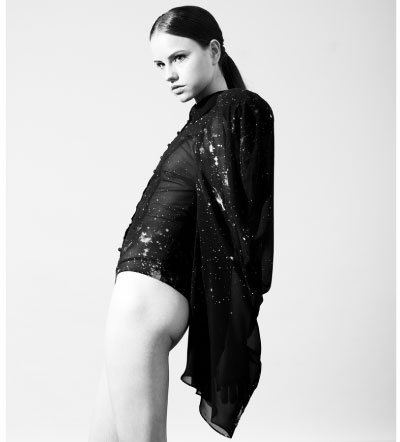
Fashion, Jewelry and Shoes by Julie Eilenberger. Photography by Yves Borgwardt. Model. Kati from Seeds

A student at Universität der Künste, Julie Eilenberger debuted her designs in early July in her school’s presentation at Berlin Fashion Week. My Inner and Outer Space, a take on astronomic inspiration, combines structure with the ethereal. Eilenberger, who is 24, says of the collection, “I wanted something dark and unnatural yet elegant…the outfits are somewhat futuristic but with a feeling of history.”
Indeed, the Space collection exhibits multiple contrasts: the intricacy of tiny eyelets and veils of asymmetric black Swarovski crystals against simple chiffon and jersey; flowing drapery elevated by exaggerated shoulders sculpted from hand-cut foam.
The Danish-born Eilenberger lives the role of artist-as-observer, processing influences and letting her pieces develop on their own. She says she doesn’t, by nature, engineer her creativity: “I’m just giving it way and am always surprised by the outcome, as if it’s not mine.” Appropriately, Eilenberger rarely designs with herself in mind. Instead she draws from art or a mood, or she fleshes out and dresses a fictional woman. The muse she cast for her first collection is “strong and ready to take off for space…to protect Earth,” she says. She also looked to classic science fiction films, like 2001: A Space Odyssey, Barbarella, and Logan’s Run for inspiration. The future might as well be fashionable.
(more…)
<a href="http://www.planet-mag.com/photocontest"><p class="aligncenter"><img src="http://www.planet-mag.com/blog/wp-content/uploads/bart_2ad.jpg" alt="bart_2ad" width="830" height="405" class="attachment wp-att-4145 centered" /></p></a>
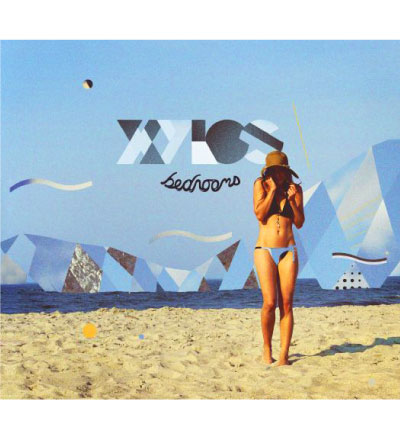

Formed just a year ago, this quintet has enjoyed a quick rise up the ranks of the Brooklyn buzz-bin — an almost meteoric ascendance that belies the band’s tender sound. Xylos’ fractured dream-pop gently brings to mind Yeasayer (who guests on a couple tracks) and the Flaming Lips. In fact, on opener “In the Bedroom” founding member Eric Zeiler’s voice evokes the wistful croon of Wayne Coyne while he bittersweetly sings about failed romance over tropical synths and twirling guitars. Meanwhile, the swooning harmonies on “This House We Built” virtually demand a coed campfire sing-along under the stars — that is, if the textured rhythms, boy-girl vocals, and ethereal strings throughout this debut EP didn’t sound so magical in stereo.
Xylos will take a break from recording their first full-length album (due by early 2010) to headline New York’s Mercury Lounge on July 28. The Bedrooms EP is currently being offered as a free download at Xylosmusic.net .
Audio clip: Adobe Flash Player (version 9 or above) is required to play this audio clip. Download the latest version here. You also need to have JavaScript enabled in your browser.
Xylos – This House We Built
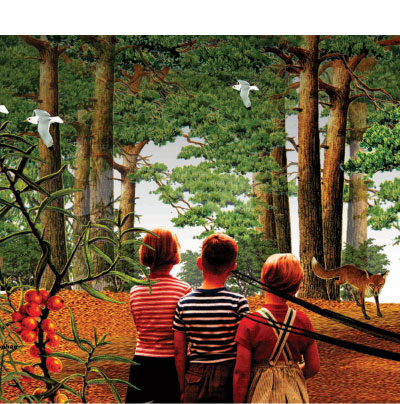
Images by Joyce van den Berg

Today, twenty years after the fall of the Berlin Wall, much of the former border between the East and West is still a no man’s land. A painful reminder of times past, the barren strip of land lies untouched, as though someone witnessed something horrible there and swore to never speak of it again.
Inspired to change this, landscape artist Joyce van den Berg set up the exhibition New Light on No Man’s Land, currently on display at the German Center for Architecture (DAZ) in Berlin. The exhibition shows precisely where the restricted area used to be and how it has changed, and proposes to transform the “landscape of trauma” into a dynamic and organic recreation area.
Van den Berg wants to construct two bicycling tracks and reseed the ground so that new plants can grow where there is now little else but sand and gravel. The sandy terrain used to be regularly flattened in order to make it easier for the border guards to spot the fresh footprints of East Berliners fleeing to the West.
(more…)
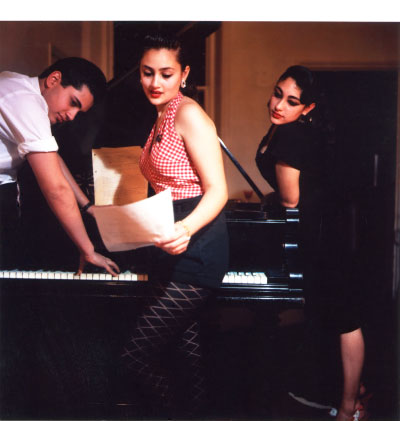
DH Records / Mercer Street Records

Quiffs, pompadours, and ducktails. Skintight skirts. Super-high heels. Ill-fitting broad-shouldered jackets. It’s either a ’50s theme party or a Kitty, Daisy & Lewis gig. The three Durham siblings, all under 20 years of age, may not be sure who Nirvana is, but ask them about any of their three favorite Louises — Louis Jordan, Louis Freeman, or Louis Armstrong — and they can school you.
Kitty, Daisy & Lewis tend to favor music from half a century ago. Their impressive multi-instrumental abilities (at their July 7th show at the Echo in Los Angeles, we saw guitars, drums, harmonicas, pianos, ukuleles, banjos, trombones, and accordions, not to mention a double bass, scattered about onstage) are dedicated to recreating sounds from a pre-digital time. These same instruments, plus a few more, will be found in their North London home where Lewis Durham has set up a recording studio. It is here that they completed their self-titled debut (out August 11). A combination of select covers spanning from the ’20s to the ’50s, Kitty, Daisy & Lewis’ track-list also features five original songs penned by one or all three of the siblings.
Entirely analogue — as is expected — Kitty, Daisy & Lewis has the crackle of vinyl embedded in it.
Audio clip: Adobe Flash Player (version 9 or above) is required to play this audio clip. Download the latest version here. You also need to have JavaScript enabled in your browser.
Kitty, Daisy & Lewis – Going Up The Country
(more…)





 Facebook
Facebook Permalink
Permalink Digg
Digg Reddit
Reddit LinkedIn
LinkedIn StumbleUpon
StumbleUpon Tumblr
Tumblr









